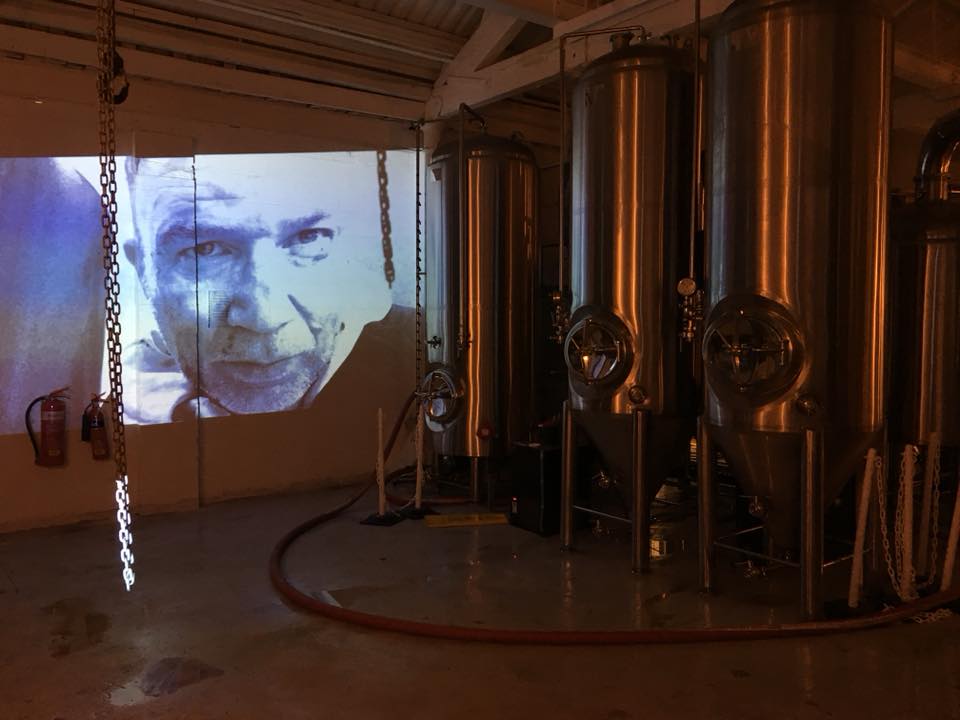Devising method:
The principal influences on the devised interdisciplinary performance of Macbeth Projeto (April,2017-December, 2020) came from contemporary Brazilian devising performance. In 2008/09, Prof. Aleksandar Dundjerovic (PI) was awarded a Leverhulme Research Fellowship to research practice in Brazilian theatre devising. In addition, Dundjerovic has a long-established relationship with the School of Performing Arts at The University of Sao Paulo, where he has been a visiting Professor since 2007. His two books: co-authored Brazilian Collaborative Theatre (2017) and co-edited Brazilian Performing Arts (2019) were founded on his investigation into the diversity of performance models in the work of directors and group theatres in contemporary Brazil. In this creative research project, the philosophy of cultural anthropophagy – essential to Brazilian national theatre, particularly to the founding theatre director-author Ze Celso’s Teatro Oficina, underpinned the approach to performance practice research. Anthropophagy is rooted in 1920s Brazilian Modernism and the work of poet and playwright Oscar de Andrade. As an artistic philosophy, anthropophagy sought to establish a uniquely Brazilian culture founded on indigenous, African and non-European influences. In Brazilian theatre, the concepts of subjectivity, intercultural, otherness and hybridity are a consequence of the anthropophagic approach, of freely using arts and culture references and ‘eating’, cannibalising the best parts through own creative process.
In Brazil, Shakespeare’s opus has been linked to anthropophagy (Refskou, Amorium, and Carvalho, 2019) and, as a writer, he has unprecedented presence in the work of Brazilian directors and group theatre. Another important influence on the devising method of Macbeth Projeto was the actors-author approach that came from Robert Lepage (Repère Cycles) and Anne Bogart (Viewpoints). From the start, playing with imagery, context, subtext and inter-theatricality from Macbeth, as well as an understanding of the Elizabethan rehearsal process (Stern, 2008) informed our devising strategies. The ways in which the group of actors worked on the play during rehearsals, particularly using a scroll (as a score of an action plan) and making the group performance in a very short period of time, provided important guidance to our research process.
The number of cycles was not defined at the beginning of the process; rather, each cycle emerged from the previous one. The performance in Cycle 1 became a reference point for the development of Cycle 2 and so on. From Cycle 2, we positioned the character of Macbeth as the protagonist who is an entertainer, allowing him to shape events in his party, interacting with a participatory audience (invited to his feast to celebrate him becoming a King). Lady Macbeth’s character mediated through different cycles as a projection in a water bucket, contortionist, performed in a solo show by the same actor doing Macbeth, and as an augmented reality avatar was the main antagonist. The only other character from the play Macbeth was the ghost of Banquo that haunted Macbeth while he was entertaining his guests (audiences). In Cycle 6, in addition to the character of Macbeth, we focused on the creation of three different Lady Macbeths and the development of the characters of Duncan, Banquo, Witches, and Lady Macduff. Planning a collaboration with Brazilian Theatre Company Os Satyros was fixed from the beginning of the creative research process that would come at the end of our investigation in cycle#6.
An important part of the devising method came from the theatrical space and the transposition of the play’s text into the space. Using performing and visual arts to migrate the dramatic text required us to incorporate strategies from participatory audience, live digital performance, site–specific, installation, and immersive performance.
Research Objectives:
- To explore ways in which the devising process can be used to work on new interpretations of the text, particularly in relation to Shakespeare and his poetic imagery driven theatre.
- To use performing and visual arts to migrate the dramatic text into an interdisciplinary performative experience for the audience.
- To investigate the architecture of the performance as a location that creates spatial dramaturgies. There is not just a physical reality; spaces are linked to actions and events that provide them with a meaning beyond their configuration.
- To create a performance style actualizing the aesthetic qualities of Shakespeare’s text through an intermedial performance explored through multiple artistic forms, styles and media.
- To find a way to explore the hidden meanings in Shakespeare’s Macbeth through Brazilian collaborative creative and anthropophagic theatre.
- To develop new ways of understanding Shakespeare through mixed-authorship collaborative performance adaptations.
- To establish a relationship with the audience as participants (and creators) through immersive performativity in the theatre event.
- To develop a range of innovative research methods, methodologies and analytical techniques for the rehearsal process, using Shakespeare’s Macbeth as a key dramatic text.
Shakespeare’s Macbeth
The choice to work with Shakespeare’s Macbeth as a vehicle for investigation of rehearsal techniques and migration of the dramatic text into performance and visual arts was based on the play’s open structure, the relation with black culture and African traditions and imagery that provided provocation for exploration of the performance space.
Macbeth, the shortest, fastest moving and with strongest religious references, and presence of evil, of Shakespeare’s plays, was written between c.1603-1606. The play was probably performed for the first time in 1606, although eyewitness accounts place it in 1611 at the Globe Theatre. The First Folio in 1623 is the early printed text-based on theatre scrolls, with editing and revision “possibly by Thomas Middleton1. Shakespeare’s Macbeth is considered unfinished (or unrecorded). Its poetic structure was placed in a five-act dramaturgical structure after the 19th century. The text is based on a recording of a performance. The poetic images and themes could be seen as scores that could be developed through the actor-author approach. The structural openness of Macbeth allowed the appropriation of the collaborative creative process. Because of all these, It was suitable for the devising process using the RSVP/Repère method, Viewpoints and anthropophagic performativity.
Ever since Orson Welles’ production of ‘Voodoo Macbeth’ with an all-black cast in 1936 in New York’s Harlem, the text of Macbeth has provided connectivity with traditions that could bring different understandings as well as performative and aesthetic qualities to the interpretation of the play. Welles’ transposed Macbeth from Scotland (Shakespeare uses accounts to base his character on Raphael Holinshed’s Chronicles of England, Scotland and Ireland,1587 a popular history at his time) to an island resembling Haiti, using the supernatural and witches to connect with African traditions. We wanted to transpose Macbeth to the aestheticism of Brazilian black traditions and anthropophagic cultural influence.
Via the witches, Shakespeare takes us through a series of events linked to actions that are spatialized and performed within specific aesthetics. Macbeth allows us to recreate rituals from different cultures and create images with them. It is in the richness of the visual possibilities that Macbeth offers us what is behind the choice of this play. Shakespearean theatrical conventions are based on an open bare stage space and performed in daylight. The conventions of the Elizabethan stage allowed us to transpose the images within Shakespeare’s text into a different theatrical space, from site-specific to digital and virtual locations.
1 See ‘Introduction’ Editor Sandra Clark and Pamela Mason (2015). Macbeth Third Series (The Arden Shakespeare).
References
Dundjerovic, A. and Ramos, L.F. ( 2017) Brazilian Collaborative Theatre U.S. : McFarland & Co Inc..
Dundjerovic, A and Ramos, L.F. eds. (2019) Brazilian Performing Arts , Madrid : Abada Editores.
Refskou, A.S., de Amorim, M.A., de Carvalho, V.M., (2021). Eating Shakespeare Cultural Anthropophagy as Global Methodology. London: Bloomsbury
Stern, T. (2008) Rehearsal from Shakespeare to Sheridan , Oxford University Press.

